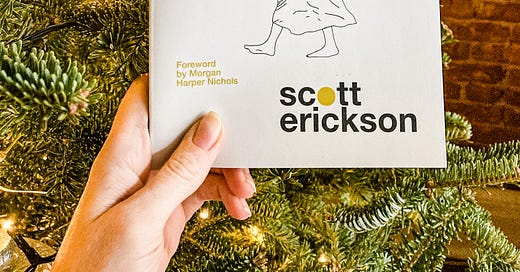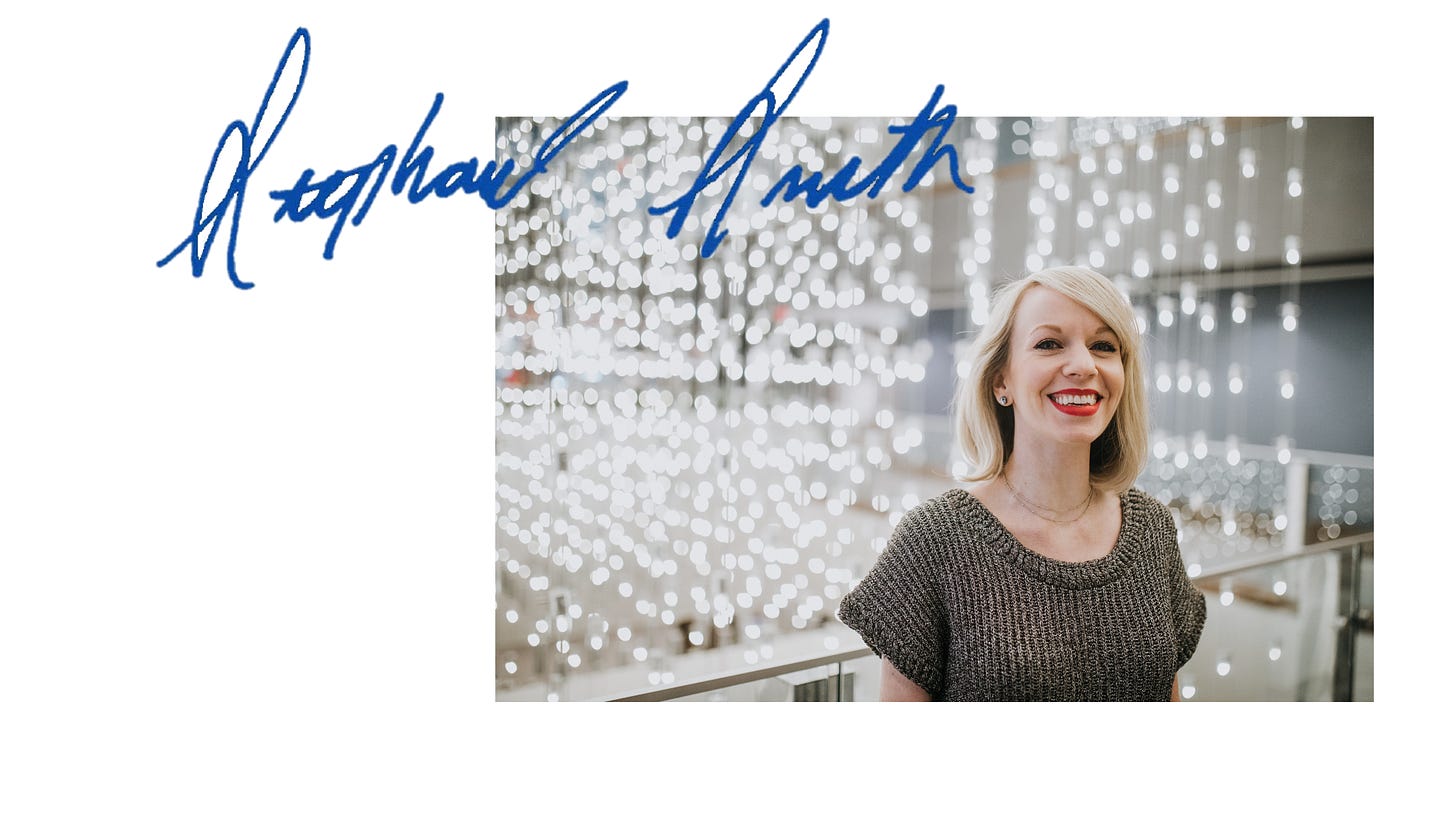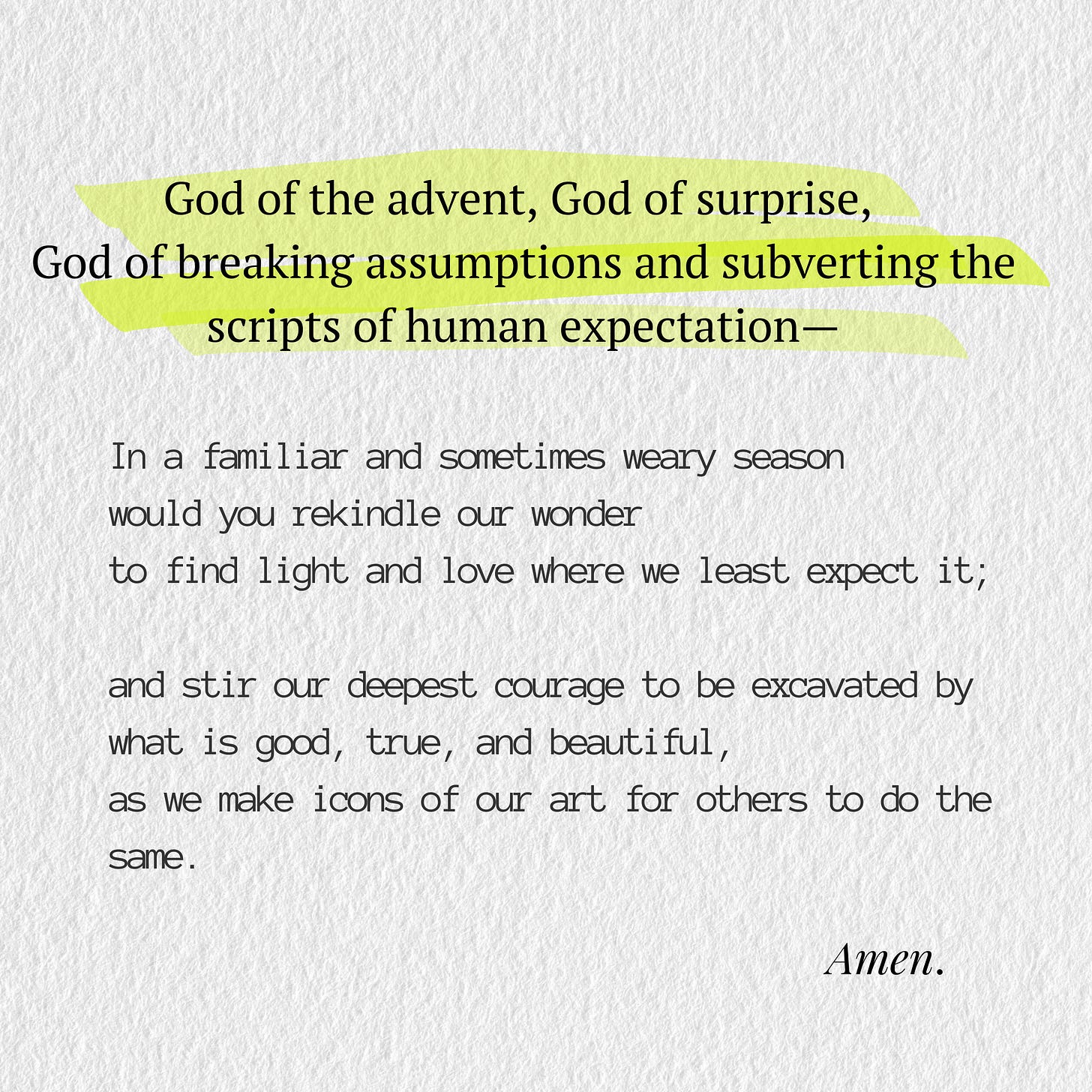SLANT LETTER: The Art of Making the Familiar Fresh
A close reading of Scott Erickson's "Honest Advent."
You’re reading SLANT LETTER, a newsletter for writers looking to deepen their craft + practice soul care for the creative life. Subscribe to get it straight from this editor’s desk to your inbox, plus my free guide to crafting your unique writing angle—exclusive to subscribers! You can learn more about this letter and the editor behind it here.
You all gave me such great feedback on our last close reading, that I decided to do another one. Today we’ll be reading from artist and author Scott Erickson’s Honest Advent, a gorgeous and provocative read on “awakening the wonder of God-with-Us here, then, and now” [full disclosure: I had the pleasure of editing this title].
What I love about Scott’s writing is the range of his voice: it’s earthy, both playful and profound, and as an artist and modern iconographer, he brings a unique visual voice to his work that brings fresh layers of meaning to his words. He brings the depth of a spiritual director (which he is) to the laugh factor of a stand-up comic (which he also is!), and there’s nothing quite like it.
Honest Advent is an excellent case study of what all writers aim to do in their own way: take something familiar and cast it fresh. After all, writing is the work of making way for little advents—sparking new light and revelation to our everyday experiences.
Let’s take a look at his opening chapter for a few highlights you can learn from and bring to your own writing. And if you haven’t yet, get yourself a copy for your own note-taking and enjoyment!
Highlight #1: Build tension
The first thing I want you to notice is how Scott builds tension from line one:
This tension might be a pain point, a question, a quandary, and it may have multiple dimensions: mental, emotional, physical, spiritual. I love the way Scott gets to the ache here: “I needed something honest. Something real. Something with some human grit and a little less red and green.”
Another great line: “It seemed to me the brand of Christmas had traded its honest edge for sanitized characters in a never-ending winter scene.” You have plenty of time ahead to work out a way forward, but at the outset, increase that ambivalence!
Highlight #2: Define your terms
If there’s one thing I am allergic to in my edits it is a dictionary.com definition. These flat renderings don’t tell the reader anything they don’t already know. So that’s not what I mean here. What I do mean is this is your chance to express the uniqueness of your core concepts in your own words.
For example, if you’re writing about wholeheartedness, what does this mean to you? In a book called Honest Advent, it would be important to outline what Advent is anyway, which Scott does, as well as a clear, memorable definition of what wonder is, since he’s making the case that it’s wonder we’ve lost when it comes to the Christmas narrative.
He writes,
“[Wonder] is that moment when all of our narratives and stories about life disappear in the rapturous experience of actually being here.”
Love it. So wonder is this sense of getting swept up into something bigger than ourselves, removed from our pre-fixed perceptions. How do we activate this wonder, then? Note the intentional layers of his definition:
“Wonder is most accessible in new situations, because we don’t have a narrative about what’s happening.”
While it sounds basic, you’d be surprised how many writers make the mistake of assuming readers share their definitions of their core concepts!
Highlight #3: Run a baggage check
Once you’ve mapped out your key terms, you might add to this what I’ve come to call a “baggage check.” Every reader brings their own set of preexisting assumptions to your subject matter, so your intro is the prime place to gently help them sort through their baggage, as a means to:
Clear out misconceptions
Challenge common assumptions
Directly address reader vulnerabilities, anything that may be tender for them
Clearly define what you DON’T mean (disclaimers) to better support what you do
Name the necessary nuances
Here I would say be choosy about your disclaimers (I often find writers think they need more than they actually do, as we tend to over-explain or overdo the caveat) but once you’ve identified the nuances of what you need to say, say them here!
Defining your terms will guide your readers’ expectations at the outset, and checking their baggage will free them up to travel light.
Scott does this on multiple levels: by telling his reader that his vision is wonder not some kind of gimmicky shock factor, by explaining his intentional choice for deity pronouns, and nuancing some of his key arguments.
Highlight #4: Cast the invitation
There’s a delicate balance in previewing the reader’s journey ahead, while resisting giving it all away prematurely. See how Scott threads this needle here:
As for the images accompanying each reading, Scott issues a creative invitation:
“My suggestion is to spend a minute with each image. Let it excavate you. A great question when it comes to art is, ‘What does it mean?’ An even better question is, ‘What is this pulling out of me?’”
Now there’s an Advent invitation for you: “Let it excavate you.” Whatever this season holds for you, may wonder find you and your writing in unexpected places.
Until next time,
Take heart. Write on. You got this.
Know a writer who’d be into this?
This letter is this editor's off-hours labor of love. If you've found something useful here, pass it on to a fellow writer friend!
P.S. // A Blessing for Writers
SLANT LETTER is about both craft + soul care for the creative life. So today, I want to speak this blessing for all of us anxious, ambitious, internet-exhausted writing folk.










